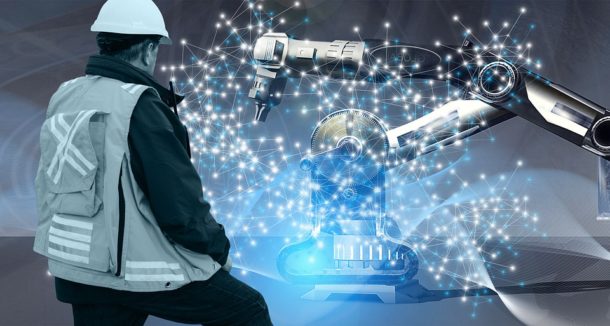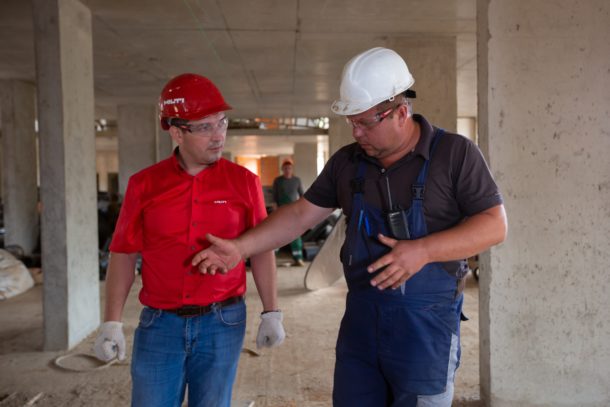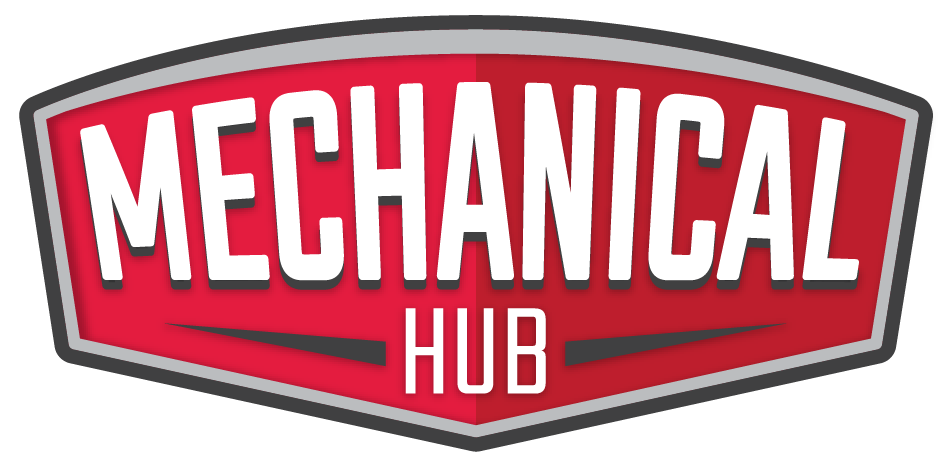In today’s competitive marketplace, maintaining a competitive edge is crucial for the success and growth of any business. Whether you’re a small startup or an established enterprise, staying ahead of the competition requires continuous effort, innovation, and strategic planning. This blog post outlines key strategies that can help your business stay a notch above the Read more
Whats New

In today’s competitive marketplace, maintaining a competitive edge is crucial for the success and growth of any business. Whether you’re a small startup or an established enterprise, staying ahead of the competition requires continuous effort, innovation, and strategic planning. This blog post outlines key strategies that can help your business stay a notch above the rest, ensuring long-term success and profitability.

Invest in Quality Products and Services
The foundation of any successful business is the quality of its products or services, and in industries like construction, plumbing, and electrical work, this is non-negotiable. Customers rely on your expertise and products to be durable, reliable, and safe. To stay ahead, consistently deliver value by offering top-notch products that meet or exceed industry standards.
For example, if your business deals in wholesale electrical supplies, investing in the best equipment ensures that your customers receive reliable and high-performing products. This not only enhances customer satisfaction but also positions your business as a trusted provider in the industry.
Leverage Cutting-Edge Technology
Technology is transforming every industry, including construction, plumbing, and electrical services. To maintain a competitive edge, businesses in these fields must leverage the latest technological advancements that can streamline operations, improve efficiency, and enhance customer experiences.
For construction companies, implementing project management software can track timelines, resource allocation, and budgets in real-time, helping ensure projects stay on track. Plumbing and electrical businesses can benefit from field service management tools that allow them to schedule jobs, manage inventory, and optimize routes for their technicians. For example, automated scheduling systems can help reduce downtime and ensure that urgent jobs are handled promptly, increasing customer satisfaction.
Consider implementing automation tools that can handle repetitive tasks, freeing up time for your team to focus on more strategic initiatives. Additionally, investing in data analytics can provide valuable insights into customer behavior, market trends, and business performance, allowing you to make informed decisions that drive growth.
Prioritize Customer Service
In the construction and plumbing industries, exceptional customer service is a powerful differentiator. Customers often require urgent assistance in these fields, and their experience with your business will largely determine whether they return or recommend your services.
To stand out, ensure your customer service team is trained to be responsive, knowledgeable, and empathetic to client needs. Consider offering multiple channels for support, such as phone, email, and chat options, making it easy for customers to reach you. Timely communication is key—whether it’s providing an estimate, updating a project timeline, or addressing concerns.
Stay Adaptable and Innovative
The business landscape is constantly evolving, and staying ahead requires a willingness to adapt and innovate. Keep an eye on industry trends, emerging technologies, and changes in customer preferences, and be ready to pivot your strategies as needed.
Encourage a culture of innovation within your organization by empowering employees to share ideas and take calculated risks. Experiment with new products, services, or business models, and be open to feedback and adjustments. By staying flexible and forward-thinking, your business can quickly respond to changes in the market and continue to grow.
Staying a notch above the rest in the business world requires a combination of quality, innovation, and customer-centric strategies. By investing in the best equipment, leveraging cutting-edge technology, building a strong brand, prioritizing customer service, and staying adaptable, your business can maintain a competitive edge and achieve long-term success. Remember, the key to staying ahead is continuous improvement and a commitment to delivering exceptional value to your customers.

Construction work is physically demanding, often leading to injuries and medical conditions that can affect a worker’s ability to continue working. These injuries can range from sudden, catastrophic accidents to the slow, gradual onset of chronic conditions like back pain, respiratory issues, or joint damage. When a worker’s ability to perform their job is compromised Read more
Construction work is physically demanding, often leading to injuries and medical conditions that can affect a worker’s ability to continue working. These injuries can range from sudden, catastrophic accidents to the slow, gradual onset of chronic conditions like back pain, respiratory issues, or joint damage. When a worker’s ability to perform their job is compromised for an extended period, they may need to file for long-term disability (LTD) benefits. However, the path to securing LTD benefits is often complex and has legal challenges, especially in the construction industry. This is where seeking assistance from an LTD Attorney becomes crucial.
Understanding Long-Term Disability in the Construction Industry
Injuries are an unfortunate reality in the construction field. Heavy machinery, dangerous work environments, and the physical strain of manual labor contribute to a higher likelihood of injury than many other professions. While workers’ compensation might cover some immediate medical costs and lost wages, long-term disability comes into play when the injury or illness extends beyond a short recovery period, making it impossible for the worker to return to their job in any meaningful capacity.
In the construction industry, common injuries that can lead to long-term disability include:
- Musculoskeletal disorders like back and neck injuries can result from heavy lifting or awkward postures.
- Respiratory illnesses are caused by exposure to harmful substances like asbestos, silica, or toxic fumes.
- Injuries resulting from falls are among the most common and severe types of construction-related accidents.
- Chronic conditions that develop over time, such as arthritis or nerve damage from repetitive movements.
When these injuries or illnesses prevent construction workers from continuing their careers, LTD benefits offer a financial safety net. However, obtaining these benefits can be complicated, and employers or insurance companies may challenge claims, making legal support essential.

The Legal Process of Securing Long-Term Disability Benefits
Filing a claim for LTD benefits is often more complex than simply submitting medical records. In many cases, insurance companies may deny a claim if they believe the worker can still perform some level of employment, even if it’s not in their original field. Additionally, proving that a condition is long-term or permanent rather than temporary requires thorough medical documentation and often involves negotiations with insurance adjusters. This is where the legal process becomes both essential and daunting.
Filing the Initial Claim
The first step is submitting an LTD claim, supported by medical evidence that clearly outlines the worker’s condition and its impact on their ability to perform their job. A lawyer ensures that all documentation is comprehensive and accurate, minimizing the chances of an immediate denial. Since insurance companies often scrutinize claims to avoid payouts, they look for any gaps or inconsistencies in the paperwork that could justify a rejection.
Responding to a Denied Claim
Despite solid evidence, initial claims for LTD benefits are frequently denied, especially in high-risk industries like construction. Insurance companies may argue that the worker is not entirely disabled or that the condition does not meet the required definition of “long-term” disability. In this situation, an attorney will help the worker navigate the appeals process, which can involve gathering additional medical evidence, obtaining expert testimonies, or filing a lawsuit if necessary.
Navigating Complex Insurance Policies
Many construction companies offer group long-term disability insurance policies to their employees. Still, these policies often contain legal fine print that can be difficult for a worker to understand fully. The language in these contracts can be confusing, particularly regarding definitions of disability, exclusions, and time limits for filing claims. An attorney helps interpret these policies to ensure workers know their rights and obligations.
Negotiating Settlements
The legal process may sometimes lead to negotiations between the worker and the insurance company. If an initial denial is overturned, a settlement may be proposed. However, these settlements are only sometimes fair or adequate for workers’ needs. A lawyer ensures that workers do not settle for less than they deserve and that their long-term financial security is fully accounted for.
Challenges Unique to Construction Workers
Due to the nature of their work, construction workers face unique challenges when filing for long-term disability. For one, proving that an injury is truly disabling can be more difficult, as insurance companies might argue that the worker can perform lighter duties or take on alternative forms of employment. For example, they might suggest that a worker with a back injury could perform sedentary work, even though the reality may be that the worker’s skills, training, and opportunities are limited to the physical demands of construction work.
Additionally, many construction injuries develop over time, which can complicate proving the injury is work-related. Conditions like carpal tunnel syndrome, arthritis, or chronic back pain are common in the industry. Still, insurers may view them skeptically and argue that these conditions are part of the aging process rather than the result of occupational hazards. Legal representation is critical in establishing the link between the injury and the worker’s duties and demonstrating the full extent of the disability.
Conclusion: The Importance of Legal Support
Securing long-term disability benefits is rarely straightforward, especially for construction workers dealing with complex medical conditions and physically demanding job roles. While LTD benefits provide essential financial support, obtaining them requires a deep understanding of a claim’s medical and legal aspects. With the help of an experienced LTD attorney, construction workers can navigate the complexities of insurance policies, file strong claims, and appeal unfair denials to ensure they receive the benefits they rightfully deserve.

Navigating the construction industry’s waves can be thrilling, yet daunting. It’s not just about staying afloat; it’s about sailing ahead of the curve, making waves where there were none. So how do you turn everyday challenges into stepping stones for success? Let’s take a look at some great tips to keep your construction business not Read more
Navigating the construction industry’s waves can be thrilling, yet daunting. It’s not just about staying afloat; it’s about sailing ahead of the curve, making waves where there were none. So how do you turn everyday challenges into stepping stones for success? Let’s take a look at some great tips to keep your construction business not just running, but sprinting forward.
 Embrace Technological Advancements
Embrace Technological Advancements
Look around; technology is transforming every nook and cranny of our lives. Why should construction be any different? Adopting the latest tech can give you an incredible edge. Imagine cutting costs and boosting efficiency all at once with tools like drones for site surveys or software for real-time project updates. It’s like having a magic wand that keeps your projects on track and under budget!
Cultivate Strong Relationships
Here’s something I’ve noticed recently: the best businesses are built on stellar relationships. When you’re reliable and open in your dealings, clients and suppliers stick around, and they often bring friends! Keep those lines of communication wide open, check in often, and always, always follow through. It’s about creating a network that grows stronger and more valuable every day.
Enhance Your Financial Acumen
Money is super important—especially in construction, where every project feels like a giant jigsaw puzzle with a price tag. Getting your financial ducks in a row means more than just balancing books; it’s about foreseeing financial storms and having a plan to sail through them. Smart budgeting and sharp cash flow management can save you from many sleepless nights. Don’t forget to dot your i’s and cross your t’s on every deal!
Invest In Your Team
Ever heard the saying, ‘A team is only as strong as its weakest link’? Investing in your team’s growth is a no-brainer. Upskilling them not only brings in new expertise but also helps in building a loyal workforce. Plus, when your team knows you’ve got their back, they’ll go the extra mile to ensure each project is top-notch. And let’s be honest, a happy team means happy clients!
Regulatory Compliance And Legal Safeguards
Keeping up with regulations isn’t just good practice—it’s essential for smooth sailing. Compliance keeps those pesky legal challenges at bay, ensuring your projects roll out without a hitch. However, if you do find yourself facing some problems, then having a good construction lawyer by your side is a really smart move. They’re your go-to for navigating complex contracts and steering clear of potential legal snares.
Continuous Innovation And Adaptability
In a field as dynamic as construction, staying the same just doesn’t cut it. You’ve got to be nimble, ready to jump in on new opportunities or pivot when things don’t go as planned. Whether it’s adopting green building practices or exploring new materials, innovation is your golden key to success. It keeps you relevant and in demand, which is exactly where you want to be.
Conclusion
Building a thriving construction business is more than laying bricks and mortar; it’s about laying a foundation of innovative practices, solid relationships, financial savvy, and continual growth. It’s about setting your sights high and not just meeting but exceeding those lofty goals. With these tips, you’re not just safeguarding your business—you’re setting the stage for a legacy of success.

The manufacturing sector has faced numerous challenges, particularly in maintaining high quality and minimizing defects. Thankfully, the advent of artificial intelligence (AI) is turning the tide. If you want to revolutionize production with manufacturing AI, this post will guide you through how this technology redefines defect detection and boosts overall efficiency. The Evolution of Quality Read more
The manufacturing sector has faced numerous challenges, particularly in maintaining high quality and minimizing defects. Thankfully, the advent of artificial intelligence (AI) is turning the tide. If you want to revolutionize production with manufacturing AI, this post will guide you through how this technology redefines defect detection and boosts overall efficiency.
The Evolution of Quality Control in Manufacturing
Traditional Methods of Defect Detection
In the past, defect detection relied heavily on manual inspection. Workers visually checked products for flaws, a time-consuming process prone to human error. Despite rigorous training and experience, even the best inspectors could miss defects due to fatigue or oversight.
The Limitations of Manual Inspection
Manual inspection has several drawbacks. First, it is labor-intensive, requiring a significant workforce to maintain. Second, it is not scalable. As production volumes increase, so does the likelihood of missed defects. Finally, manual inspection is inconsistent. Different workers may have varying levels of attention and expertise, leading to fluctuations in quality.

Enter Artificial Intelligence
What is AI in Manufacturing?
Artificial Intelligence (AI) refers to machines’ capability to perform tasks that typically require human intelligence. AI can handle complex tasks such as defect detection, predictive maintenance, and supply chain optimization in manufacturing.
Why AI is a Game-Changer
AI is revolutionary because it offers several advantages over traditional methods. It is faster, more accurate, and can operate continuously without fatigue. Furthermore, manufacturing AI systems can learn and improve over time, offering scalability that manual methods cannot match.
How AI Detects Defects
Machine Vision Systems
Machine vision systems are a core component of AI-driven defect detection. These systems use cameras and sensors to capture images of products in real time. By analyzing these images, AI algorithms can identify defects with pinpoint accuracy.
Neural Networks and Deep Learning
Neural networks, particularly deep learning models, interpret the vast amounts of data generated by machine vision systems. These models are trained on thousands of images of defective and non-defective products, enabling them to distinguish between them with remarkable precision.
Benefits of AI in Defect Detection
Increased Accuracy
AI systems are far more accurate than human inspectors. They can detect even the most subtle defects that might go unnoticed by the human eye, ensuring that only high-quality products leave the production line.
Cost Efficiency
Although the initial investment in AI technology can be substantial, the long-term savings are significant. Reduced labor costs, fewer recalls, and less waste all contribute to a more cost-efficient operation.
Scalability
AI systems can easily scale with production volumes. Whether you’re manufacturing a few hundred units or millions, AI can handle the workload without a drop in performance.
Industry Applications
Automotive Manufacturing
In the automotive industry, where precision is paramount, AI inspects components such as engines, transmissions, and body panels. This ensures that vehicles meet stringent safety and quality standards.
Electronics Production
The electronics sector benefits immensely from AI. Given the microscopic scale of some electronic components, manual inspection is impractical. AI systems can detect minute defects, ensuring the reliability of devices like smartphones and computers.
Food and Beverage
AI is not limited to hard goods. In the food and beverage industry, AI systems inspect products for contamination, packaging errors, and other defects, helping maintain high safety and quality standards.
Challenges and Considerations
Implementation Costs
While the benefits of AI are clear, the initial costs can be a barrier for some manufacturers. Investing in hardware, software, and training requires significant capital. However, the long-term gains often justify the expenditure.
Data Management
AI systems rely on vast amounts of data. Managing, storing, and processing this data can be challenging. Therefore, manufacturers must invest in robust data infrastructure to support their AI initiatives.
Final Thoughts
Integrating AI into manufacturing is not just a trend; it’s a significant shift towards more efficient, accurate, and scalable production processes. If you’re eager to revolutionize production with manufacturing AI, now is the time to explore these cutting-edge technologies and integrate them into your operations.

Running a construction business comes with numerous challenges, not least of which is managing the potential financial risks associated with the job. From property damage to on-site accidents, the construction industry is fraught with hazards that can lead to expensive claims. In this article, we’ll explore how construction companies can mitigate these financial risks by Read more
Running a construction business comes with numerous challenges, not least of which is managing the potential financial risks associated with the job. From property damage to on-site accidents, the construction industry is fraught with hazards that can lead to expensive claims. In this article, we’ll explore how construction companies can mitigate these financial risks by implementing robust risk management strategies and securing the right insurance coverage.

Understanding the Financial Risks in Construction
Construction projects are inherently risky due to the nature of the work. Whether it’s the use of heavy machinery, high scaffolding, or handling dangerous materials, there is always the possibility of accidents. These incidents can lead to severe injuries, property damage, or even fatalities, which could result in costly lawsuits or compensation claims.
Furthermore, delays caused by inclement weather, supply chain issues, or unforeseen circumstances can disrupt timelines, increasing overall project costs. When things go wrong in the construction industry, the financial fallout can be devastating for a business. It’s crucial for business owners to protect themselves from such risks by securing appropriate insurance and implementing effective safety protocols.
The Importance of Insurance for Construction Businesses
One of the most effective ways to protect your business is by investing in construction business insurance. This type of insurance provides essential coverage for various liabilities, including property damage, injuries, and legal claims. Without it, a single accident could put the entire company at risk, forcing it to cover expenses out-of-pocket. A well-tailored policy ensures that your business can weather unexpected financial storms and continue operating with minimal disruptions.
Construction business insurance can include several different types of policies depending on the specific needs of your company. One key type of coverage is general liability insurance, which covers third-party claims related to accidents or damages occurring on the job site. This form of insurance is especially important for construction companies, as it protects against the potentially crippling costs of litigation and settlement fees.
Additional Forms of Coverage
While general liability insurance is crucial, it may not be enough to cover all the risks your business faces. Depending on the scope of your operations, you may also need workers’ compensation insurance to cover medical expenses and lost wages if an employee is injured while working. Workers’ compensation is often legally required, but even in jurisdictions where it’s not mandatory, it’s highly recommended for construction companies due to the hazardous nature of the work.
Another key form of coverage is equipment insurance, which protects against the loss or damage of expensive machinery. Construction businesses rely heavily on their tools and equipment, making it vital to ensure they are covered in case of theft, vandalism, or accidents. Additionally, for businesses that take on design or consulting roles, professional liability insurance can help cover the costs of claims related to errors or omissions in professional advice or planning.
Risk Management Strategies
Aside from obtaining the right insurance, adopting comprehensive risk management practices can help mitigate financial risks. Regular safety training for employees is essential in reducing workplace accidents. Ensuring that all equipment is well-maintained and that safety protocols are followed can significantly decrease the likelihood of accidents.
Additionally, construction businesses can benefit from conducting thorough risk assessments before starting any new project. By identifying potential hazards and implementing preventive measures, businesses can reduce the risk of incidents and, in turn, lower their insurance premiums over time.
Conclusion
In the construction industry, financial risks are unavoidable, but they can be managed. By investing in appropriate insurance policies such as construction business insurance and taking proactive steps to minimise risks on-site, construction companies can protect themselves from costly claims and losses. With the right protection in place, your business can confidently move forward, knowing that you’re prepared for whatever challenges lie ahead.

